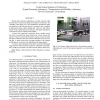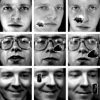183 search results - page 15 / 37 » Detecting Occlusions as an Inverse Problem |
CVPR
2012
IEEE
12 years 25 days ago
2012
IEEE
We present a novel framework for multiple object tracking in which the problems of object detection and data association are expressed by a single objective function. The framewor...
ICIP
2008
IEEE
15 years 4 days ago
2008
IEEE
Typical object detection algorithms on mobile cameras suffer from the lack of a-priori knowledge on the object to be detected. The variability in the shape, pose, color distributi...
CRV
2005
IEEE
14 years 4 months ago
2005
IEEE
The problem of elucidating the functional significance of genes is a key challenge of modern science. Solving this problem can lead to fundamental advancements across multiple are...
CVPR
2009
IEEE
15 years 5 months ago
2009
IEEE
In this paper, we study the problem of nonnegative graph
embedding, originally investigated in [14] for reaping the
benefits from both nonnegative data factorization and the
spe...
CVPR
2006
IEEE
15 years 12 days ago
2006
IEEE
This paper addresses the problem of detecting and segmenting partially occluded objects of a known category. We first define a part labelling which densely covers the object. Our ...


